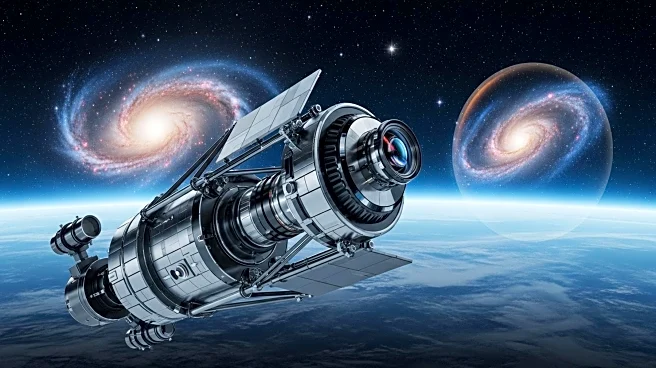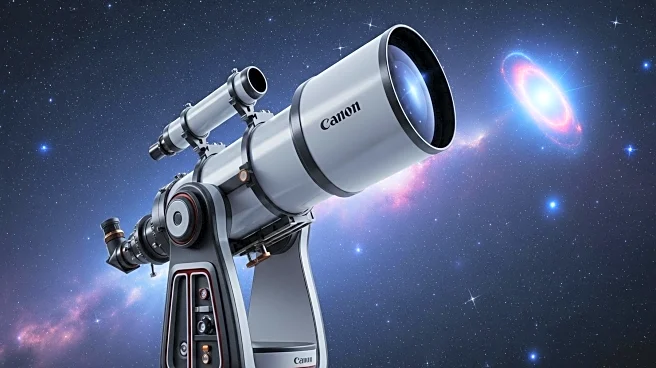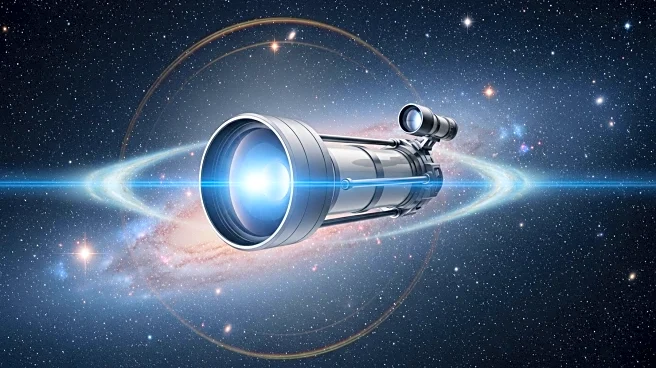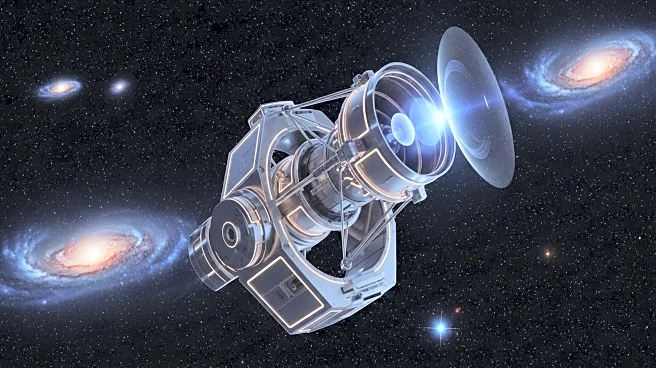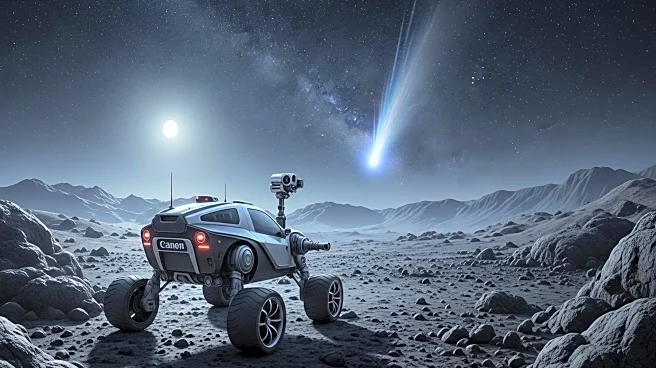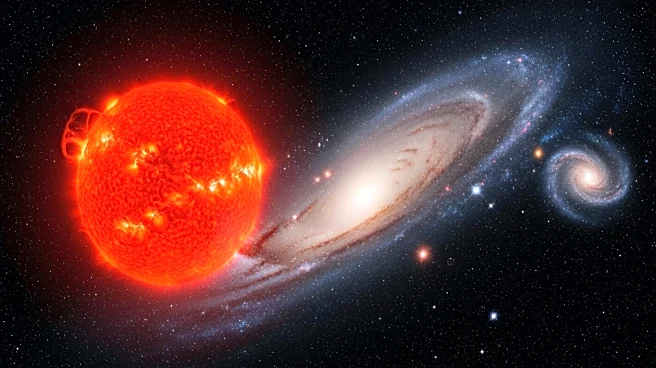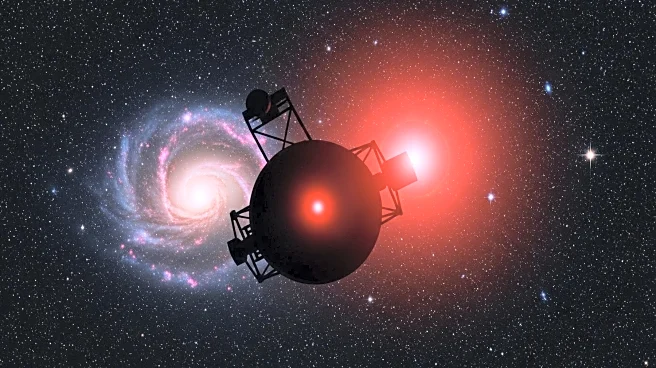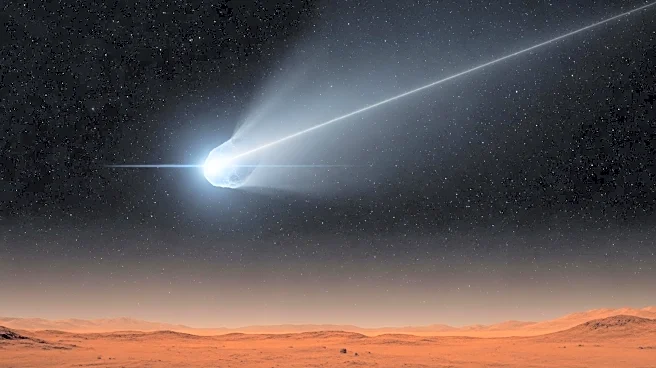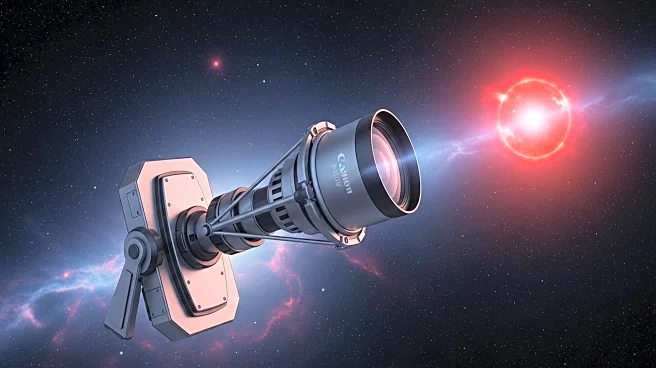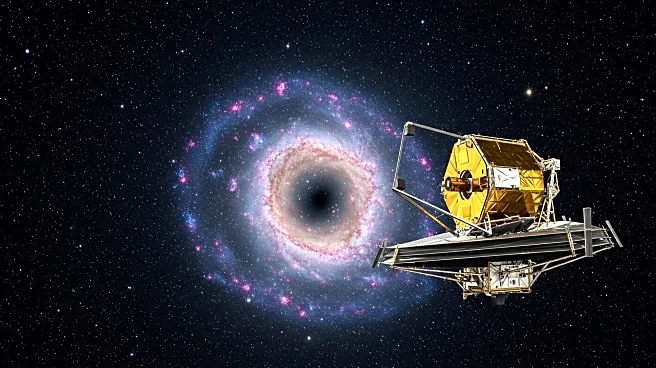What's Happening?
NASA's James Webb Space Telescope (JWST) has provided astronomers with new opportunities to study gravitational lensing, a phenomenon where massive objects like galaxies warp space-time, bending and distorting the light from more distant galaxies behind them. This effect acts as a natural cosmic magnifying glass, allowing researchers to peer further back into the universe's history. The COSMOS-Web program, designed to study galaxy formation across cosmic time, has launched the COSMOS-WEB Lens Survey (COWLS) to identify gravitational lenses. By examining over 42,000 lensing candidates, researchers have identified more than 400 promising examples, with eight of the most spectacular showcased in a recent collage. These images offer greater detail than those previously captured by the Hubble Space Telescope, revealing new clues about gravitational lensing.
Why It's Important?
The study of gravitational lensing is significant as it provides astronomers with a powerful tool to explore the universe's history and understand the formation of galaxies. By magnifying distant galaxies, gravitational lenses allow researchers to observe cosmic phenomena that would otherwise be too faint or distant to study. This research contributes to the broader understanding of the universe's structure and evolution, offering insights into the distribution of dark matter and the behavior of light in warped space-time. The advancements made by the James Webb Space Telescope in this field underscore its role as a critical instrument in modern astronomy, enhancing our ability to explore deep space and uncover the mysteries of the cosmos.
What's Next?
The ongoing research into gravitational lensing will continue to provide valuable data for astronomers, potentially leading to new discoveries about the universe's composition and the forces that shape it. As the COSMOS-Web program progresses, more gravitational lenses may be identified, offering further opportunities to study distant galaxies and cosmic phenomena. The findings from these studies could influence future space missions and the development of new technologies to observe and analyze the universe. Additionally, the insights gained from gravitational lensing research may inform theoretical models of galaxy formation and the behavior of dark matter, contributing to a deeper understanding of the universe's fundamental properties.
Beyond the Headlines
Gravitational lensing research has ethical and philosophical implications, as it challenges our understanding of space-time and the nature of reality. The ability to observe distant galaxies through natural cosmic magnifying glasses raises questions about the limits of human perception and the role of technology in expanding our knowledge of the universe. Furthermore, the study of gravitational lensing highlights the interconnectedness of cosmic phenomena, emphasizing the complexity and beauty of the universe. As researchers continue to explore these lenses, they may uncover new insights into the fundamental laws of physics and the nature of existence itself.

